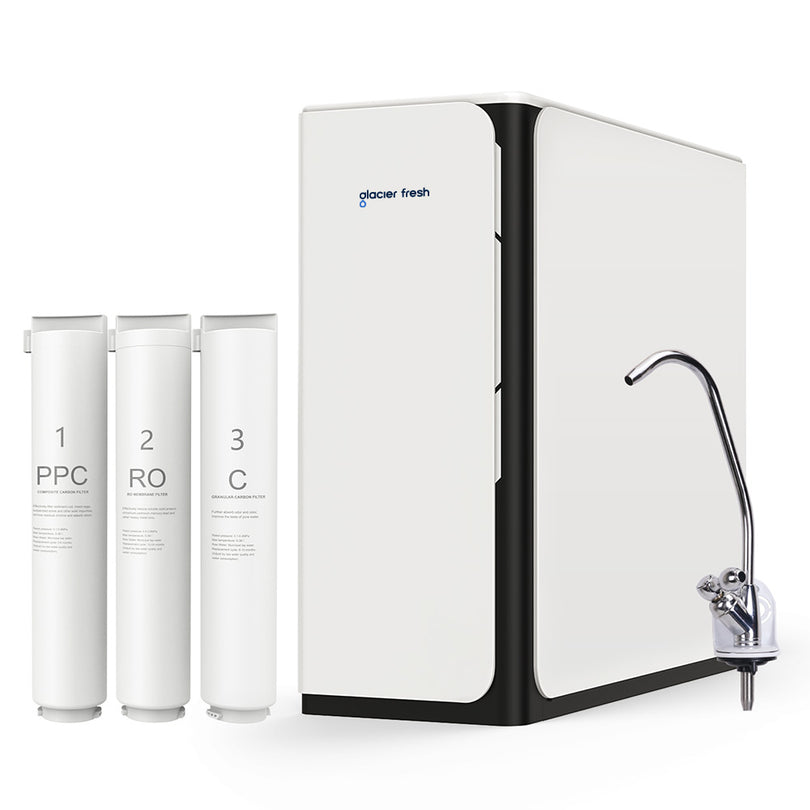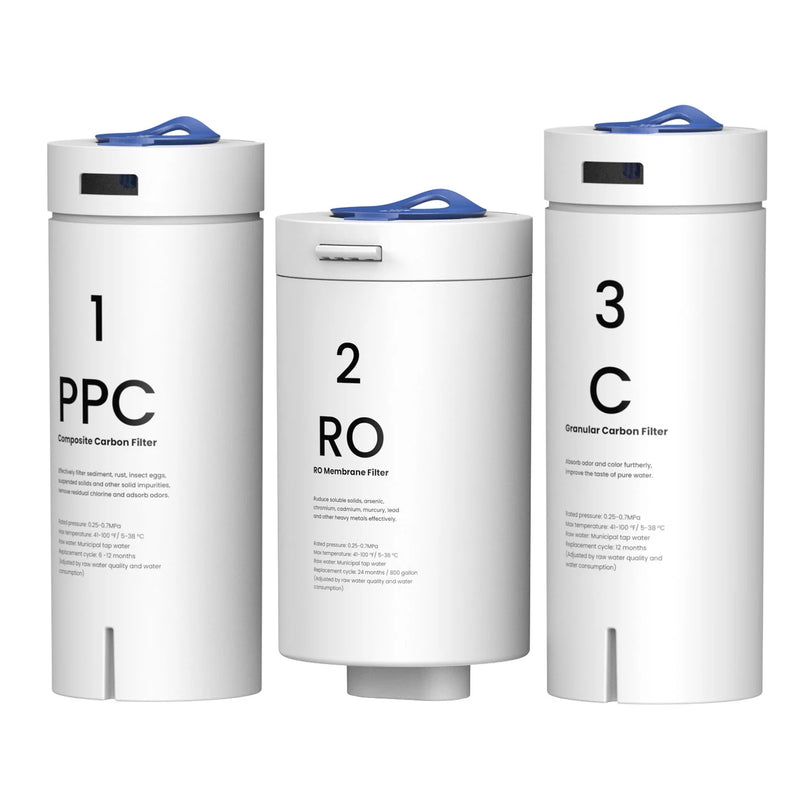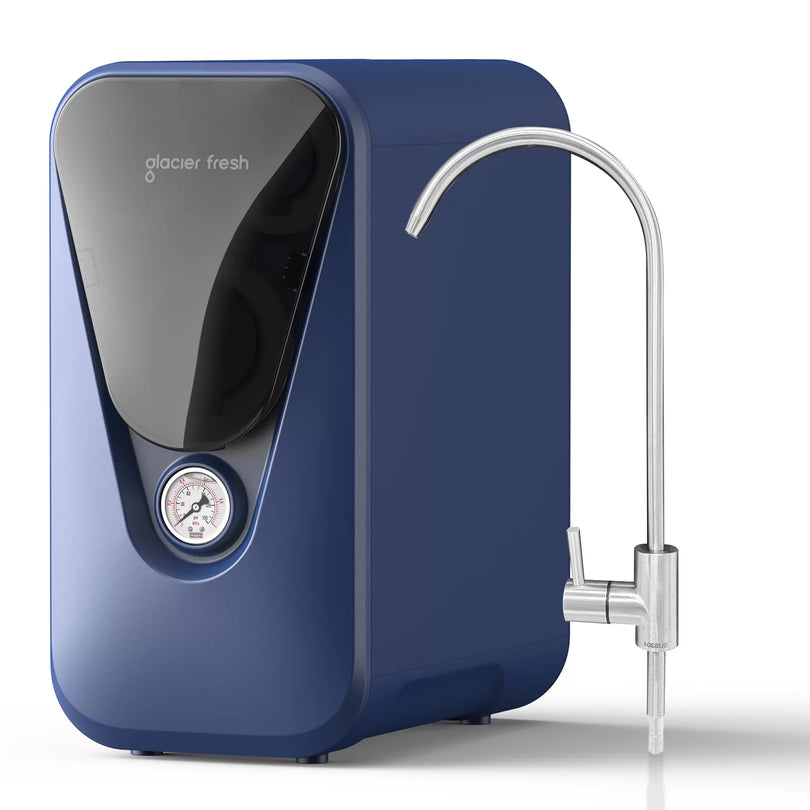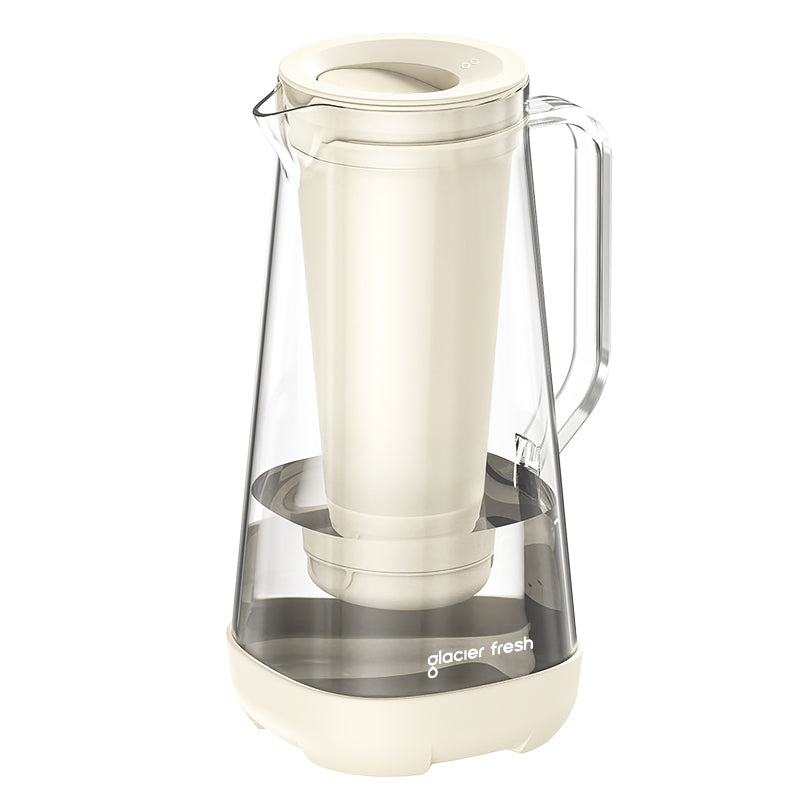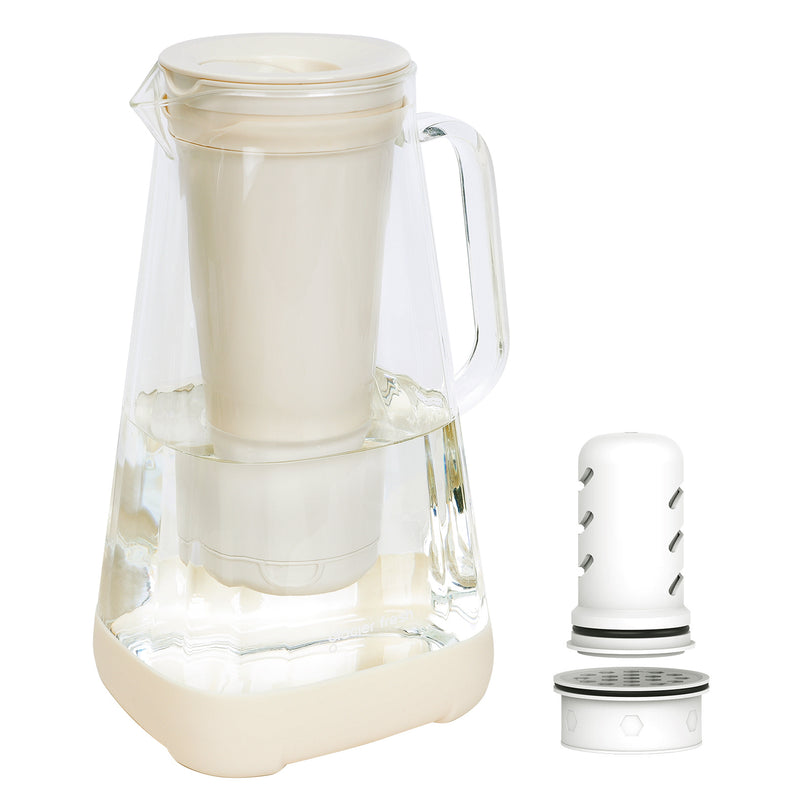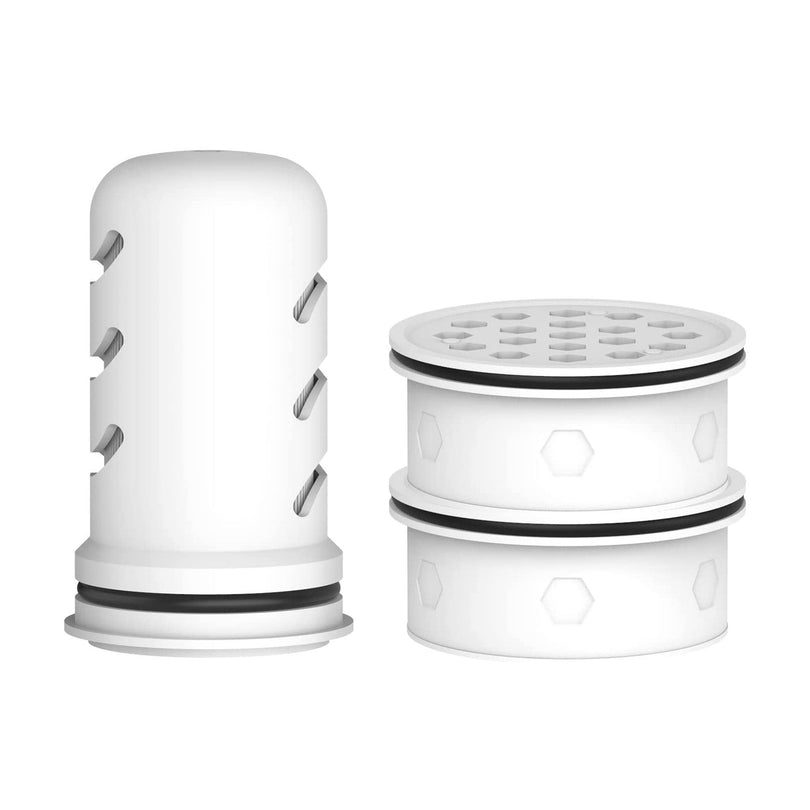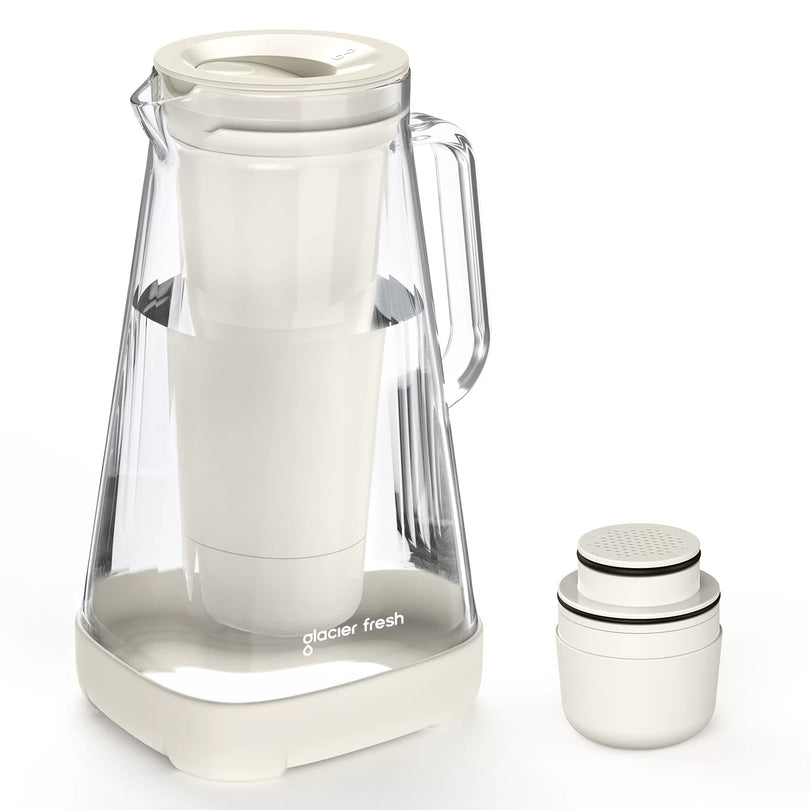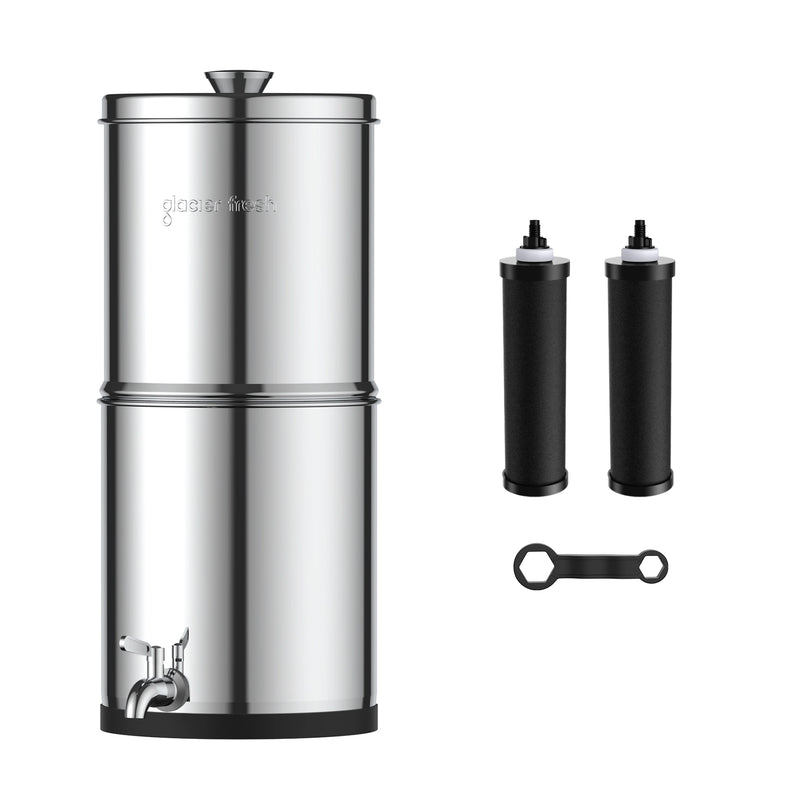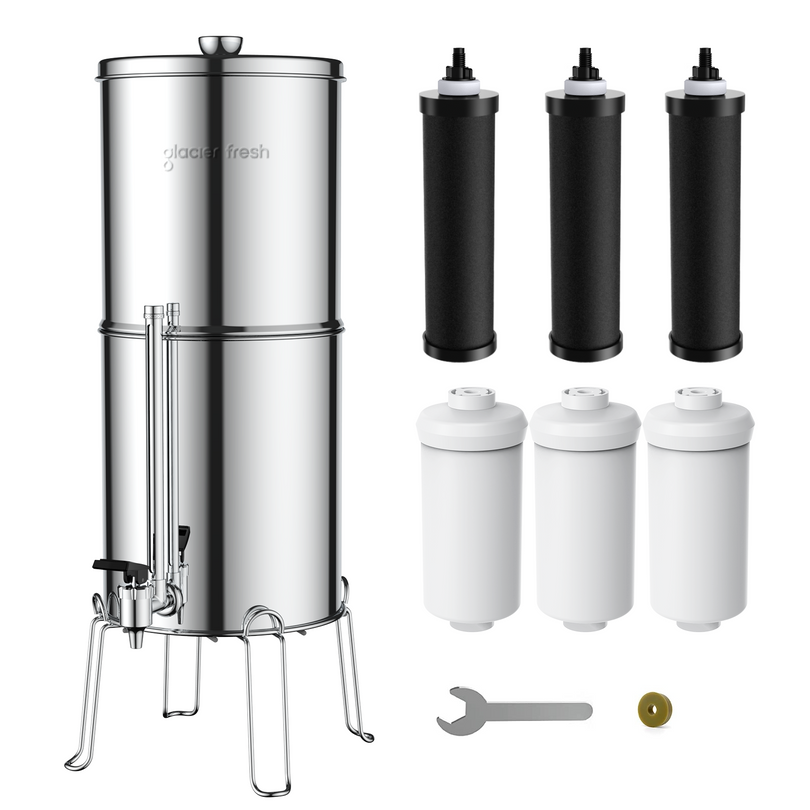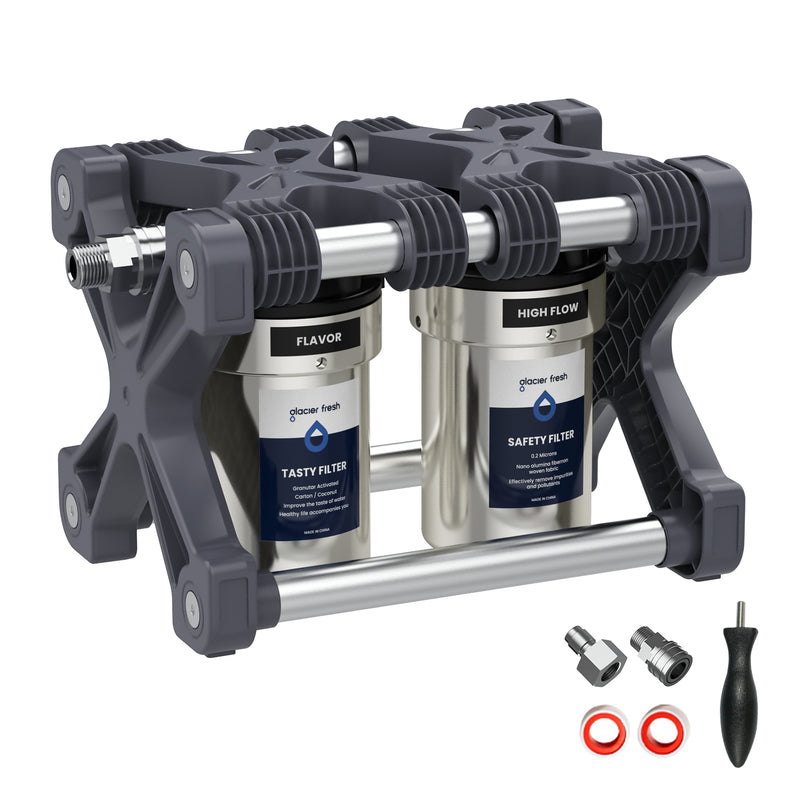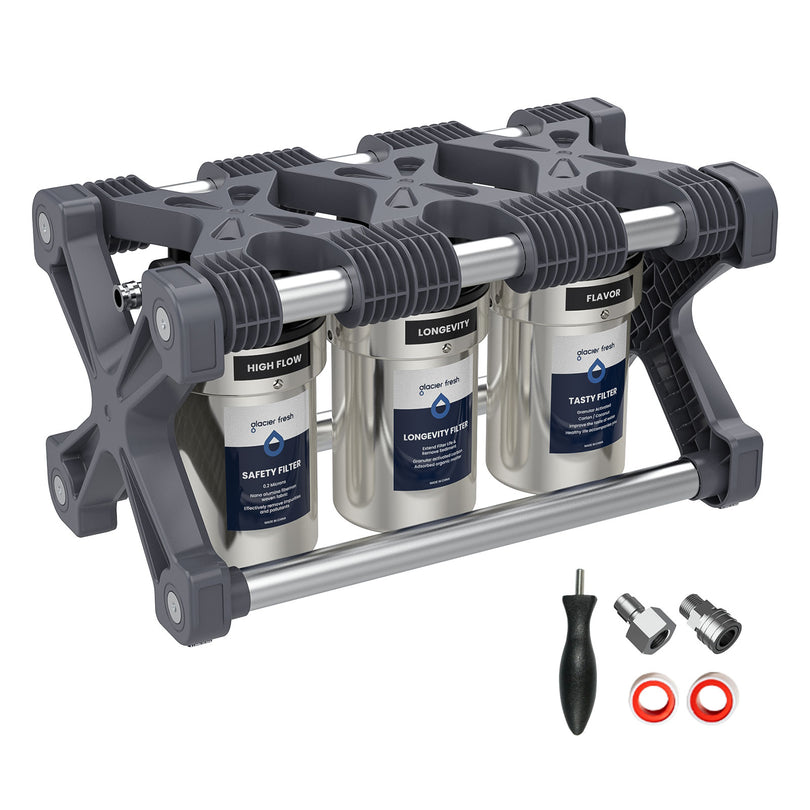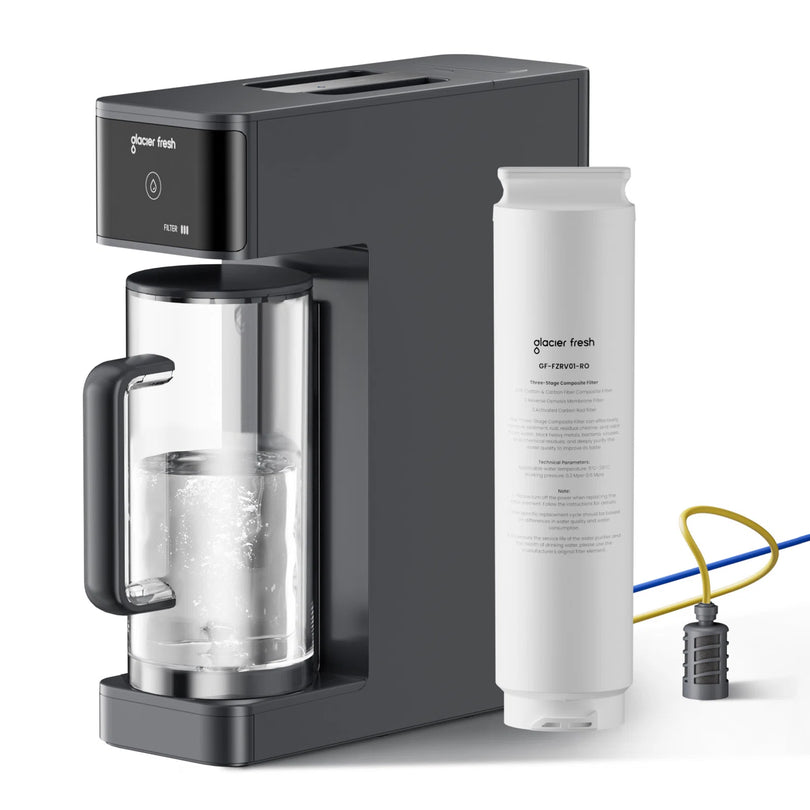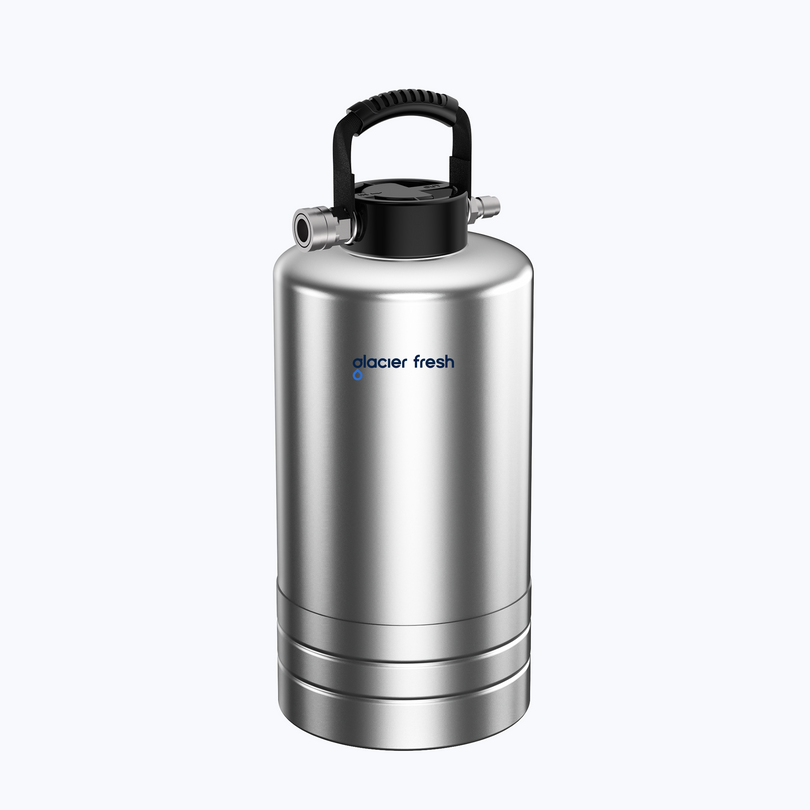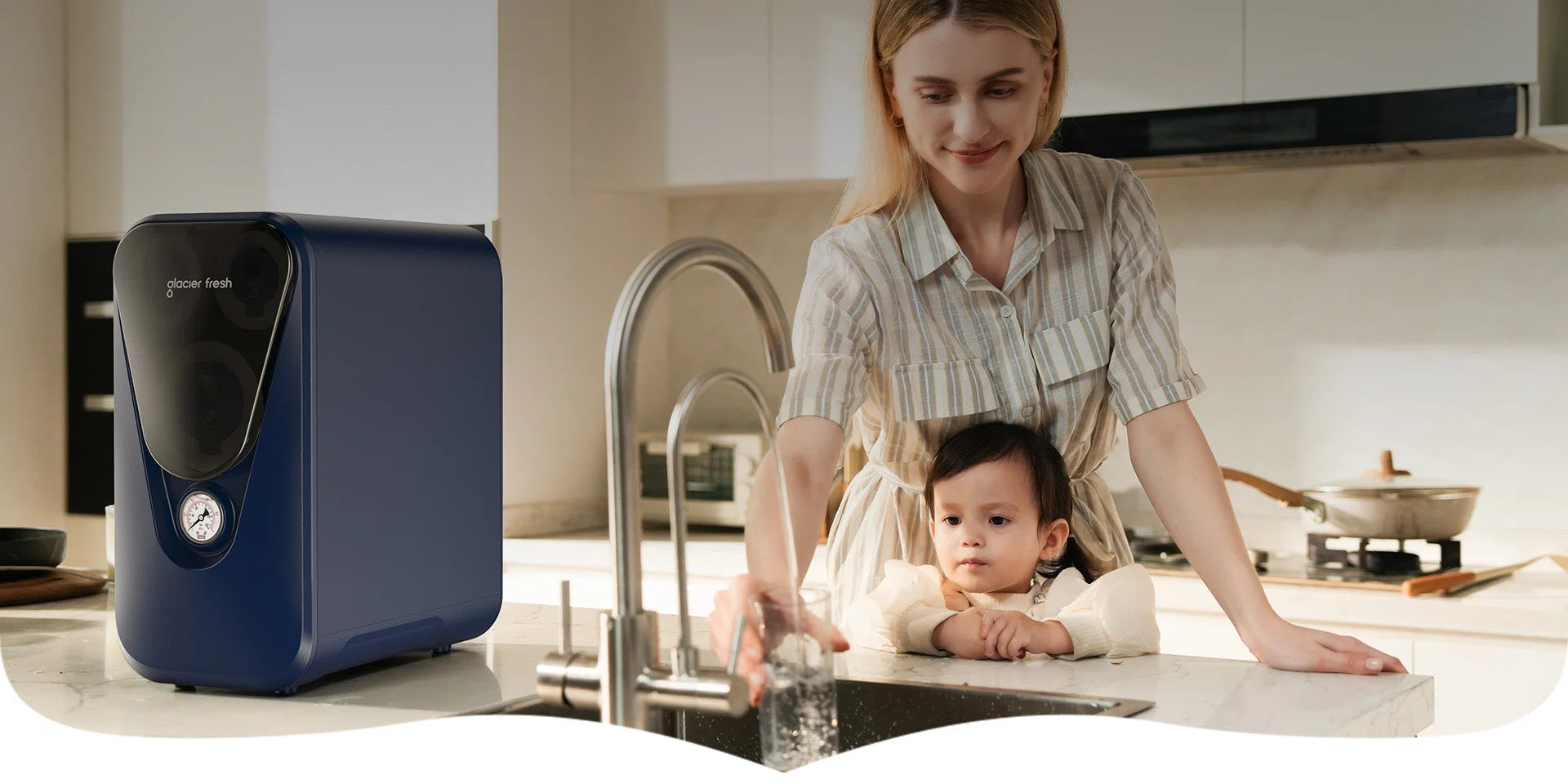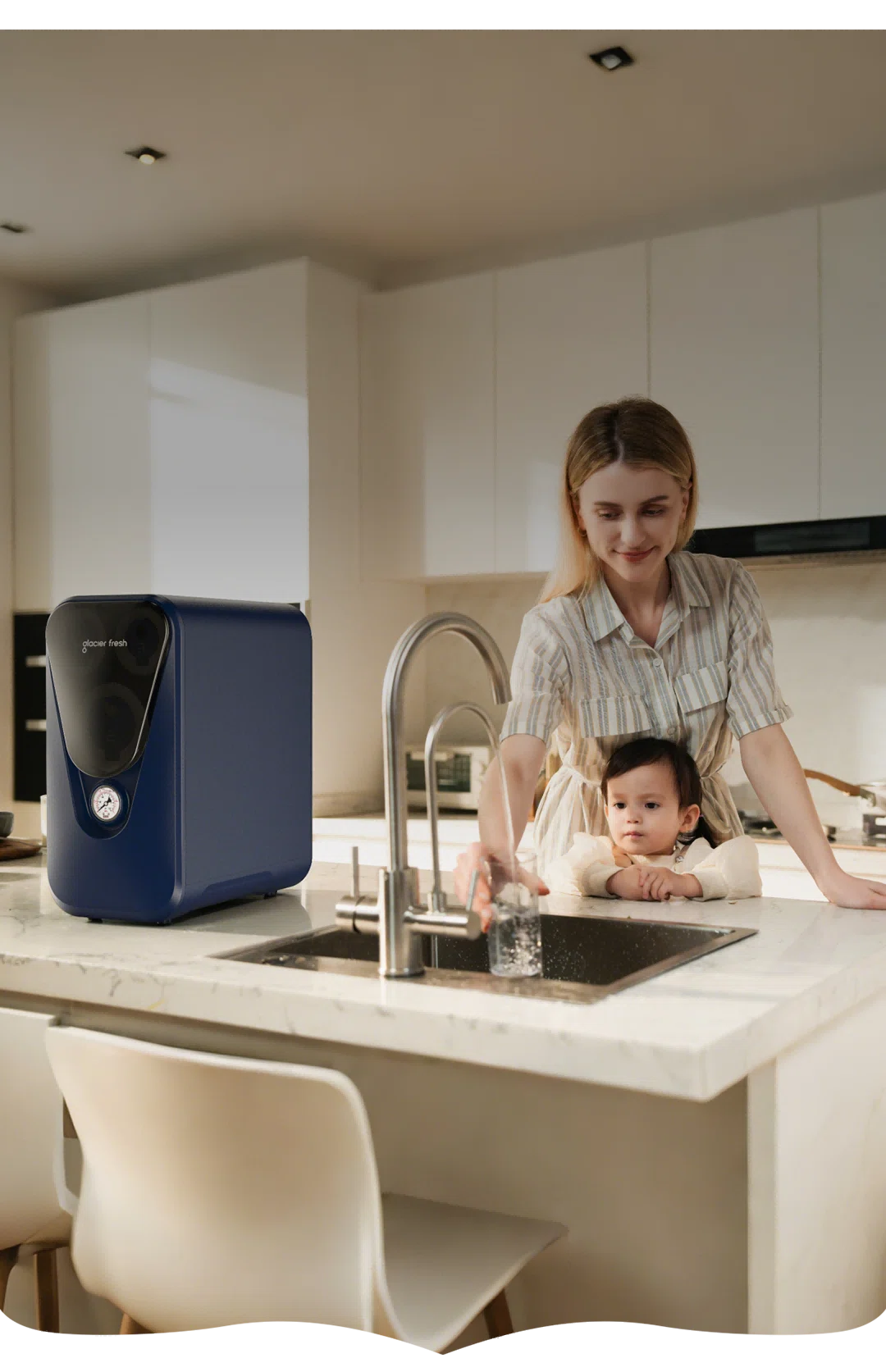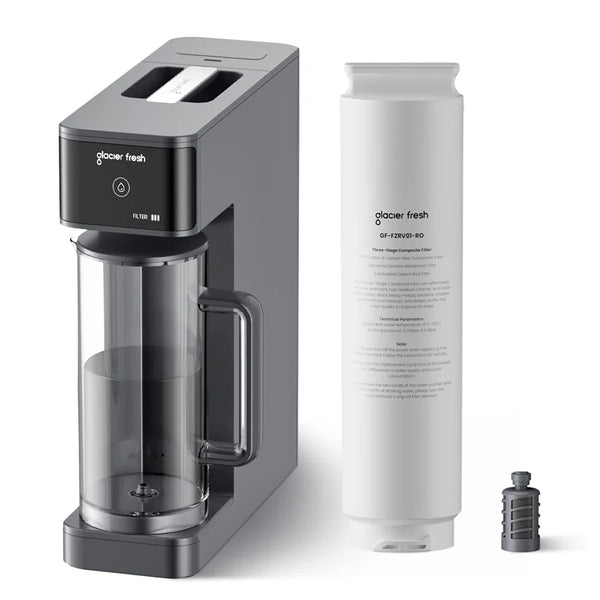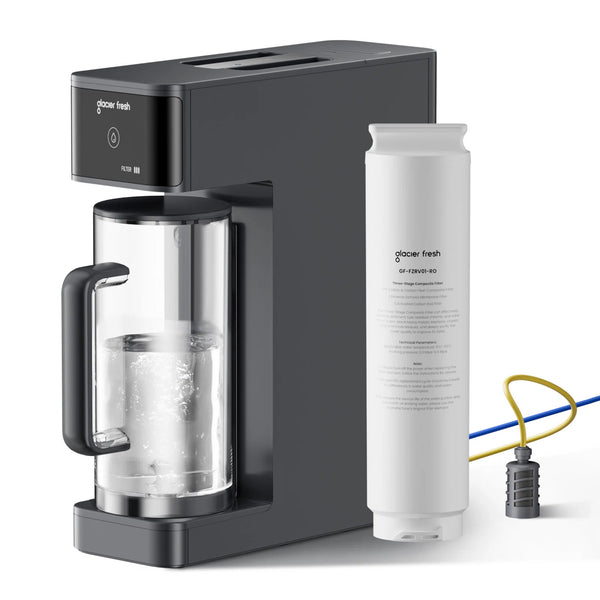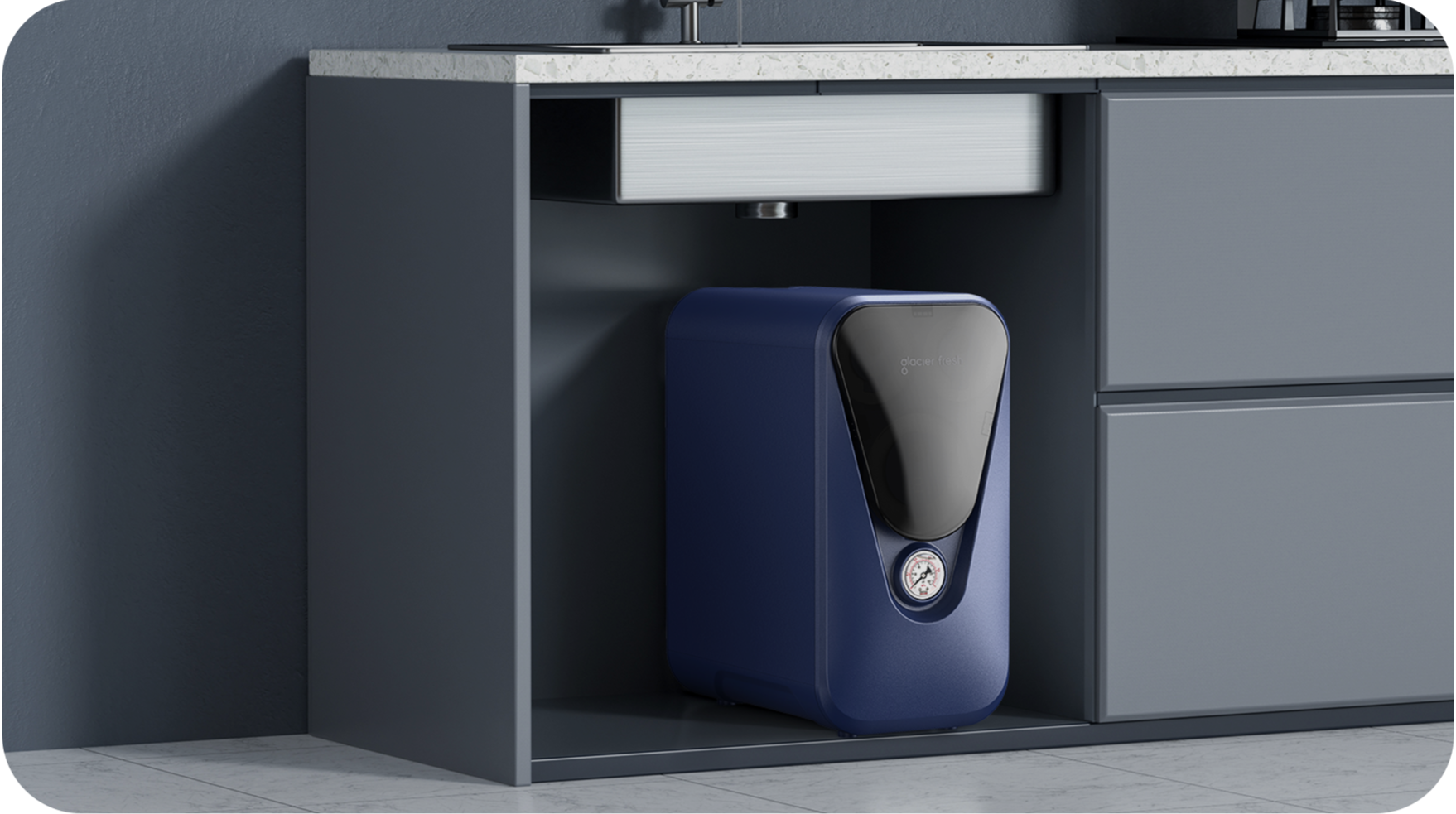Reverse osmosis systems
GlacierFresh U01 Under Counter Water Purifier System is our first-generation Under Sink Water Filter machine, 400GPD, suitable for small homes or apartments.
GlacierFresh U03 is a no-power reverse osmosis system item, the second generation Under Sink RO System, with an 800GPD capacity. It is suitable for places with high local water pressure or frequent power outages. This machine can still meet your daily water needs.
The GlacierFresh-U03 E800G RO System is our third-generation Under-Sink RO System, equipped with a power adapter and a built-in booster pump, making it suitable for areas with low water pressure.
Yes, reverse osmosis (RO) water filtration systems do produce wastewater as part of the filtration process. To separate contaminants from clean water, RO systems push water through a semi-permeable membrane, but not all the water passes through. A portion is used to flush away the rejected impurities, which becomes wastewater. Traditional systems can waste up to four gallons for every one gallon of purified water, raising concerns about water efficiency in home use.
However, modern under sink water filter systems like the Glacierfresh RO filter have significantly improved this ratio. With a wastewater ratio of 3:1, the Glacierfresh under sink water filter meets both economic and environmental standards by reducing waste and optimizing filtration efficiency. This makes it an excellent choice for eco-conscious households seeking a reliable under sink water filter that balances clean water delivery with smart water usage. For those looking to install an effective and sustainable under sink water filter, this system offers both performance and peace of mind.
A water filter for a sink works by pushing tap water through one or more filtration stages to remove impurities and improve taste. Most models start with a sediment layer to capture dirt and rust, followed by activated carbon that reduces chlorine, odors, and chemicals. More advanced options, like under-sink reverse osmosis systems, use a fine membrane that blocks heavy metals, fluoride, and other harmful substances, leaving you with safe and great-tasting water straight from your faucet.
An efficient Ro water filter not only helps conserve water but also lowers utility costs over time by minimizing waste. Systems with better Pure to Drain Rates are more sustainable and cost-effective for daily use, especially in areas with limited water resources. When choosing a filtration system, always check this rate, as it directly reflects the overall performance and efficiency of the Ro water filter. By selecting a model with a strong ratio, you're investing in clean, sustainable water without unnecessary waste.
The primary advantage of an under sink reverse osmosis water filter is its exceptional ability to remove a wide spectrum of harmful contaminants, including lead, fluoride, chlorine, heavy metals, and even certain bacteria. This filtration process forces water through a semi-permeable membrane, allowing only pure water molecules to pass through. As a result, an under sink reverse osmosis water filter delivers clean, safe, and great-tasting drinking water directly from your tap, making it a reliable solution for households concerned about water quality.
Beyond purity, the under sink reverse osmosis water filter offers unmatched convenience and long-term value. Installed discreetly under your kitchen sink, it provides a continuous supply of filtered water without the need for bulky bottles or countertop units. Over time, using an under sink reverse osmosis water filter helps reduce plastic waste and saves money compared to purchasing bottled water. For those seeking a sustainable, health-conscious, and cost-effective water solution, this system stands out as one of the best choices available.
A RO water filter operates by forcing water through a semipermeable membrane that blocks particles as small as 0.0001 microns. This allows a RO water filter to remove contaminants that conventional carbon or sediment filters can’t handle—like arsenic, fluoride, nitrates, and total dissolved solids (TDS). Most standard filters only remove chlorine, sediment, and larger particles, but a RO water filter delivers much more thorough purification.
Moreover, a RO water filter often comes as a multi-stage system, typically including pre-filters, a reverse osmosis membrane, and a post-carbon filter for polishing. This layered design ensures both chemical and microbial safety. While standard filters are great for basic filtration, a RO water filter is ideal for people who want ultra-pure water for drinking, cooking, or even aquariums.
Installing an under-sink water filter system usually takes 1 to 2 hours, depending on your plumbing experience and the complexity of the system. Most under-sink water filter system packages include detailed instructions and all necessary parts, allowing for a DIY-friendly setup. You'll typically need a drill, a wrench, and a bit of patience to connect the system to your cold water line and install a dedicated faucet if required.
For those who prefer not to tinker with plumbing, hiring a professional ensures a clean, leak-free setup and takes even less time, often under an hour. Once installed, an under-sink water filter system is out of sight and requires minimal maintenance. Whether you’re in a rental or a permanent home, an under-sink water filter system offers a great balance of convenience and performance without cluttering your countertop.
The RO membrane in an under-sink RO system typically lasts 2 to 3 years, while the pre-filters and post-filters need replacement every 6 to 12 months, depending on water quality and usage. Regular maintenance of your under-sink RO system is essential to prevent clogging, bacterial buildup, and reduced efficiency. Some units come with reminders or indicators to help you keep track of filter changes.
If you notice a drop in water pressure or a change in taste, that’s often a sign your under-sink RO system needs attention. Investing in a system with easy-to-change cartridges can save time and effort. By keeping your under-sink RO system in top condition, you'll ensure consistent water purity and extend the life of the entire system.
Most under-sink water filter cartridges need to be replaced every 6 to 12 months, depending on your water quality and daily usage. Failing to replace the under-sink water filter on time can lead to reduced effectiveness and poor-tasting water. High-sediment water may clog the filter faster, shortening its lifespan.
Some advanced under-sink water filter models come with filter life indicators or timers to help you stay on schedule. Regular replacement ensures optimal filtration and extends the life of your entire system. Keeping your under-sink water filter updated guarantees consistent water quality and peace of mind.
Yes, many RO water filter systems are designed for easy home installation, even by individuals with minimal plumbing experience. These kits usually include color-coded tubing, quick-connect fittings, and clear instructions. With some basic tools and patience, you can install a RO water filter in about 1 to 2 hours.
However, if you’re not comfortable working under the sink or want a guaranteed leak-free setup, a plumber can professionally install the RO water filter quickly. Once installed, the RO water filter operates automatically and only requires periodic filter replacements. The ease of use and high performance make it a practical choice for many households.
A RO water filter is perfect for families and individuals who want safe, healthy drinking water. Tap water often contains chlorine, heavy metals, or dissolved solids that affect taste and health. For children, the elderly, or those with weaker immunity, RO water systems offer strong protection by removing up to 99% of contaminants. They’re also useful for private wells, where nitrates, bacteria, or excess minerals may exist. Beyond health, RO filters improve taste for cooking, coffee, or daily drinking, while reducing bottled water costs and waste.
They also suit people with dietary or medical needs who must avoid excess minerals. Eco-conscious users value their sustainability, and RV owners or campers rely on portable RO units for safe water anywhere. Even small cafés use them to enhance beverage quality. In short, RO water filters serve anyone who values health, convenience, and cleaner living.

